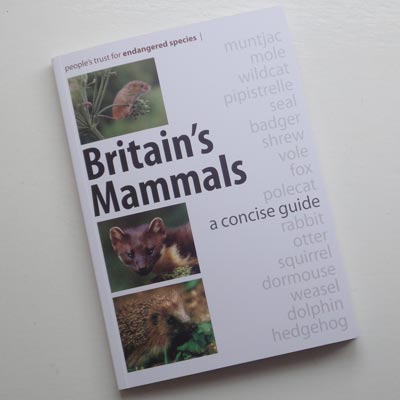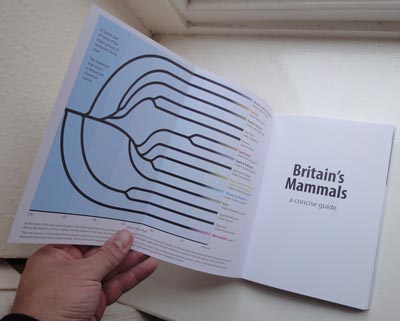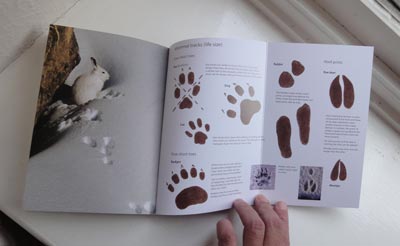Book review: Britain’s Mammals – A Concise Guide
- Complaining about the Mainland - 17th August, 2024
- New island designation – is it just greenwash? - 26th April, 2024
- Police and Crime Commissioners – a solution or a problem? - 21st April, 2024
The People’s Trust for Endangered Species are really keen on mammals – did you know that they own a large nature reserve on the Isle of Wight… for bats?

Well, mostly for bats, although obviously the dear old red squirrels and dormice get a look in. But PTES don’t go on about it much. What they do much more obviously is campaign, and research mammal conservation in Britain. Now, they’ve written a British mammal guide book, and its pretty good. Britain’s Mammals – A Concise Guide is exactly what it says. It is quite definitely not a field guide, and thus dispenses with all the necessary cruft of identification features, males and females, summer and winter pelts, yadda yadda. Instead the book presents a small, very precise pen portrait of 64 selected mammals of the British Isles, including some extinct and introduced species. Each page is packed with knowledge and up-to-date information that shows the expertise of the PTES has been put to good use.

The Concise Guide clearly prioritises content, and with it, brevity. Each species has only a page, no more and no less. After a predictably earnest forward by the godfather of British mammalogy, Pat Morris; even the introduction spares only half a page for the obligatory excursion explaining what a mammal is, and isn’t. Then it’s pretty much straight on to the animals. However, do not imagine that in Britain’s Mammals – A Concise Guide, succinctness means a lack of substance. The guide packs into each page an admirable range of information, all very clearly displayed, with a consistency that encourages and facilitates comparison in a most enlightening way.

Curiously, this pithiness does not extend to the endpapers, which expand impressively into two large fold-out charts. One shows the phylogeny of British mammals, in a diagram worthy of a zoology textbook from the 1950s. It’s pretty, but adds little if anything to the very specific insights in the text, which mercifully does not stray into the realms of evolutionary development and phylogenesis. The other end-paper shows eight life-sized mammal tracks, and a couple of photographs. Once more, it’s good-looking, but also superficial, and at odds with the body of the book which wisely does not attempt to be any kind of identification manual. It is perhaps a testament to the excellence of the main book that one cannot help feeling that these full-page spreads, whilst perfectly good in themselves, are an opportunity missed. The species pages, by contrast, are a rich delight to read. Facts present themselves wherever the reader looks – did you know there are no weasels in Ireland? Or that a lesser horseshoe bat with wings folded, is the size of a plum? This ranger didn’t. And there’s much more in the same vein. Nor are these facts listed out as a series of trivia. Each page is meticulously and thoroughly laid out to ensure that the species are dealt with in the same way, with no detail omitted. Though the diagrams and paragraphs are small, they are accurate. Even the Isle of Wight, about 1mm in size on these pages, is correctly depicted; showing that by contrast to the nearby mainland no mink, no grey squirrels, no deer and no otters live here. Other islands and inland distributions are equally carefully rendered. This is a work by people who know and appreciate the importance of such accuracy. A perennial issue when dealing with species and their status is the issue of nativeness. A matter of opinion – or even dogma – rather than fact, nativeness and debates thereon can provoke strong emotions. This book has taken quite an ecumenical approach. On the one hand a wide range of breeding non-native species are included, such as grey squirrel, muntjac deer and even the wallaby. On the other, a strict, even puritanical approach is taken to the definition of native, with only those species which most definitely saw through the last ice age being granted that descriptor. Even the poor old Orkney Vole, which is only suspected of having been transported to Orkney by neolithic settlers, is labelled as non-native. Still, like the rest of the book, the excellent layout makes it easy to see that this interpretation is followed consistently throughout. Britain’s Mammals – A Concise Guide is a fascinating and well-crafted volume, with a refreshingly crisp and contemporary interpretation of its subject. Too many plush coffee-table books on wildlife, and particularly mammals, fill the bottom shelves of charity shops, because their content is of little worth beyond some pretty photographs. The Concise Guide avoids this trap with ease, and will never share their fate. This book cannot fail to prove useful and interesting to any reader with the slightest interest in Britain’s mammals, and is strongly recommended.
Britain’s Mammals – A Concise Guide is published by Whittet Books and can be ordered online from them (cheaper than Amazon) for only

I agree Bill – for a field guide I always prefer a good drawing. Photos don’t cut it as no photo can show all the features you need to see, all at the same time. But for this book – which isn’t intended for ID – the photos actually enhanced the experience.
A wonderful and useful document no doubt. Pen and ink drawings can be better than photographs for identification at times. A good number of species to study here and become familiar with. A nice publication for the British Isles!